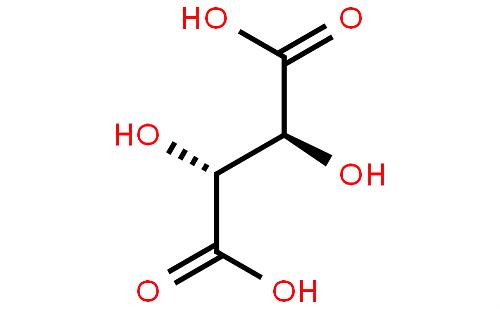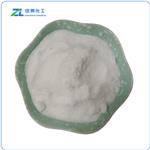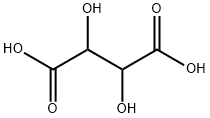Comprehensive review of D(-)-Tartaric acid
Introduction
D(-)-Tartaric acid, a ubiquitous organic acid found in nature and utilized in various industries, embodies a rich history and diverse applications. This review delves into its chemical properties, natural sources, industrial synthesis, applications in food, pharmaceuticals, and beyond, as well as its current research trends and future prospects.
Chemical composition
D(-)-Tartaric acid with the chemical formula C4H6O6, exists as a chiral molecule with two asymmetric carbon atoms. Its dextrorotatory and levorotatory forms, known as D-tartaric acid and L-tartaric acid respectively, exhibit distinct optical activities. This structural uniqueness influences its solubility, crystallization behavior, and reactivity, making it a versatile compound in chemistry.1

Natural Sources and Extraction
Historically, D(-)-Tartaric acid was first isolated from wine sediments, where it naturally occurs as potassium hydrogen tartrate or cream of tartar. Today, it is predominantly extracted from grape pomace, a byproduct of winemaking, through processes involving precipitation, filtration, and purification. Other natural sources include tamarind and bananas, albeit in smaller quantities.

Industrial Synthesis and Production
Industrial production of tartaric acid involves synthetic methods from maleic anhydride or fumaric acid. These routes are crucial for meeting global demand across various industries, ensuring consistent quality and purity required for specific applications. Advances in synthetic chemistry continue to refine these processes for efficiency and sustainability.2
Culinary and Food Industry Applications
D(-)-Tartaric acid plays a pivotal role in the food and beverage industry, where it serves as an acidulant, flavor enhancer, and stabilizer. Its tartness and ability to adjust pH make it essential in baking powder, fruit juices, soft drinks, and confectionery. Moreover, its presence in wine influences flavor profiles, stability, and aging processes.
Pharmaceutical and Medical Applications
In pharmaceuticals, D(-)-Tartaric acid derivatives find application as chelating agents, pH adjusters, and components of effervescent salts. Its ability to form salts with alkaline metals enhances drug solubility and bioavailability, crucial in formulation development. Research explores its potential in drug delivery systems and therapeutic applications.3
Industrial and Chemical Applications
Beyond food and pharmaceuticals, D(-)-tartaric acid derivatives are integral in industrial processes and chemical synthesis. They contribute to the production of adhesives, coatings, metal cleaning agents, and complexing agents in electroplating. Their chelating properties and stability under varying conditions make them indispensable in industrial chemistry.
Environmental Impacts and Sustainability
The environmental footprint of D(-)-tartaric acid production and usage is increasingly scrutinized. Efforts focus on sustainable sourcing practices, waste management, and eco-friendly synthesis routes to minimize ecological impacts. Life cycle assessments and carbon footprint analyses guide strategies toward achieving sustainability goals in its production and application.4
Current Research Trends and Innovations
Biomedical and Nutraceutical Research
Current research explores D(-)-tartaric acid's potential health benefits and therapeutic applications. Studies investigate its antioxidant properties, anti-inflammatory effects, and role in metabolic disorders such as diabetes and obesity. Nutraceutical formulations incorporating D(-)-tartaric acid derivatives aim to promote wellness and disease prevention.5
Green Chemistry and Sustainable Technologies
Advancements in green chemistry emphasize renewable feedstocks, biocatalysis, and solvent-free processes for it synthesis. These initiatives strive to reduce energy consumption, waste generation, and environmental impact while improving process efficiency and product purity.
Nanotechnological Applications
D(-)-Tartaric acid derivatives contribute to nanotechnological advancements, particularly in nanoparticle synthesis, functional coatings, and biomedical applications. Their ability to stabilize nanoparticles and modify surface properties enhances their utility in drug delivery systems, diagnostic tools, and environmental remediation technologies.
Future Prospects and Challenges
Looking ahead, the future of D(-)-tartaric acid research holds promise in addressing global challenges through innovation and collaboration. Challenges include regulatory frameworks, market dynamics, and technological barriers in scaling sustainable production and expanding applications. Interdisciplinary approaches will drive transformative discoveries and applications in diverse sectors.
Conclusion
D(-)-Tartaric acid's journey from ancient wine sediments to modern applications underscores its enduring relevance and versatility in science and industry. As research evolves, its role in shaping culinary delights, pharmaceutical innovations, and sustainable technologies continues to expand. Embracing its complexities and potential paves the way for a future where it contributes to healthier lifestyles, greener industries, and scientific advancements.
References:
[1] ASTBURY W. The Crystalline Structure and Properties of Tartaric Acid[J]. Proceedings of the Royal Society A: Mathematical, Physical and Engineering Sciences, 1923, 21 1: 134-137. DOI:10.1098/RSPA.1923.0010.[2] JAMES M. CHURCH. Synthesis of Tartaric Acid[J]. Industrial and Engineering Chemistry, 1951, 43 8: 1701-114A. DOI:10.1021/ie50500a030.
[3] M SHILO R Y S. The utilization of the tartaric acids by pseudomonads.[J]. Journal of general microbiology, 1957, 16 2. DOI:10.1099/00221287-16-2-482.
[4] XIN KE. Removal of heavy metals from a contaminated soil using tartaric acid.[J]. Journal of Environmental Sciences-china, 2006, 18 4.
[5] TARTARIC ACID[J]. C&EN Global Enterprise, 1959, 37 17: 1-164. DOI:10.1021/cen-v037n017.p078.
Lastest Price from D(-)-Tartaric acid manufacturers
US $100.00/Kg/Drum2025-04-21
- CAS:
- 526-83-0
- Min. Order:
- 1Kg/Drum
- Purity:
- 99%
- Supply Ability:
- 100ton

US $50.00/kg2025-04-15
- CAS:
- 526-83-0
- Min. Order:
- 1kg
- Purity:
- 99%
- Supply Ability:
- 5000kg/Week


